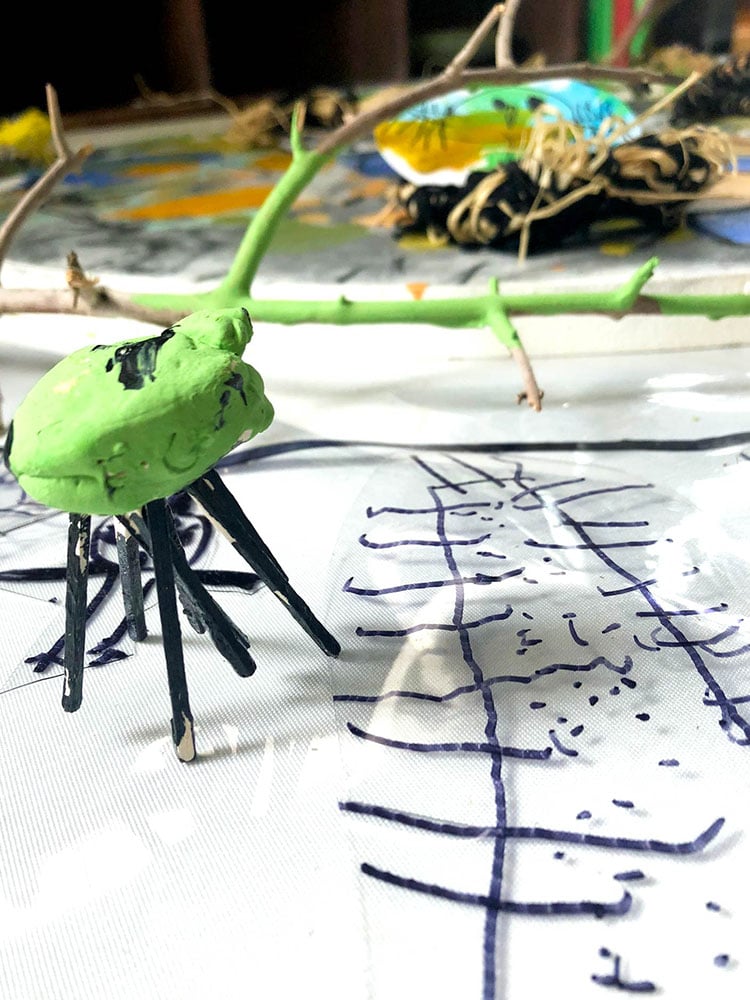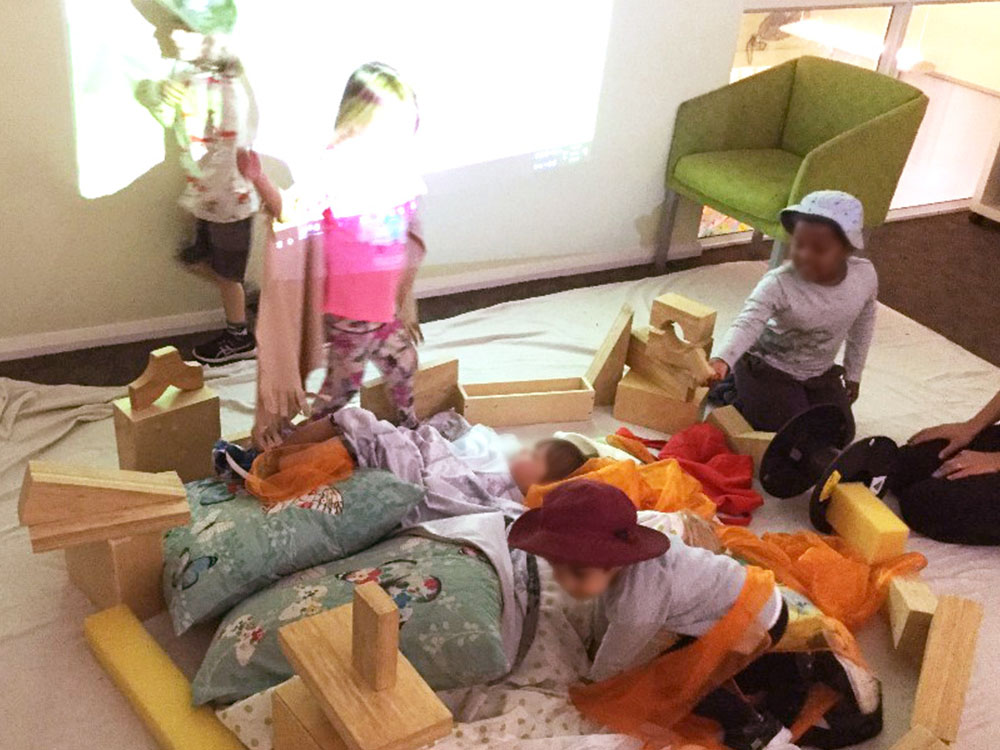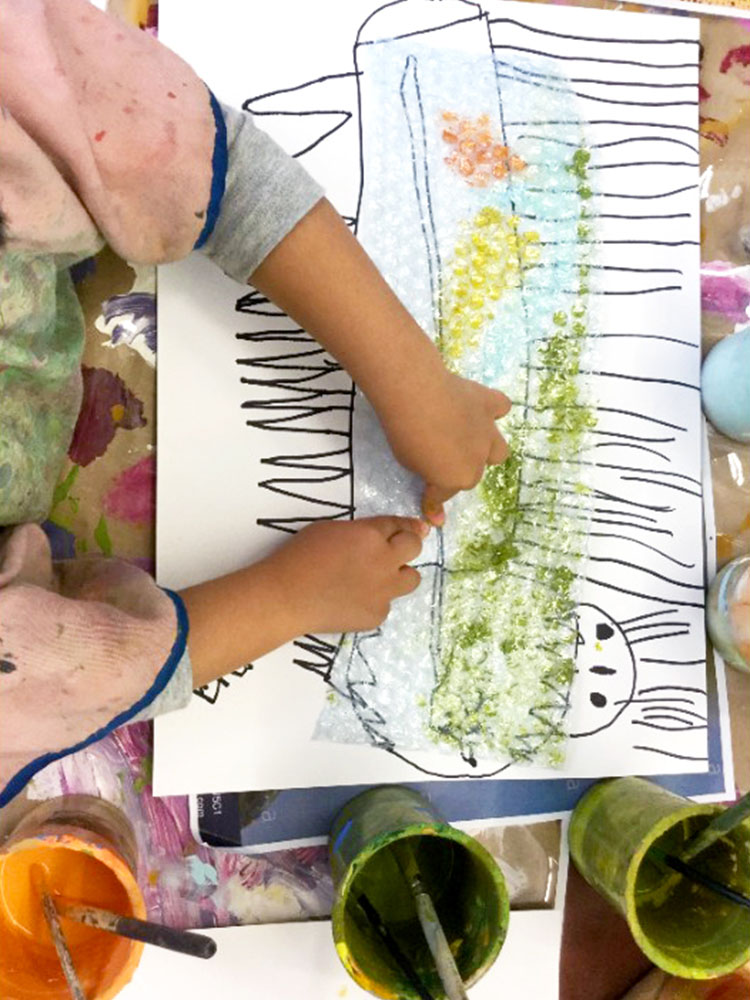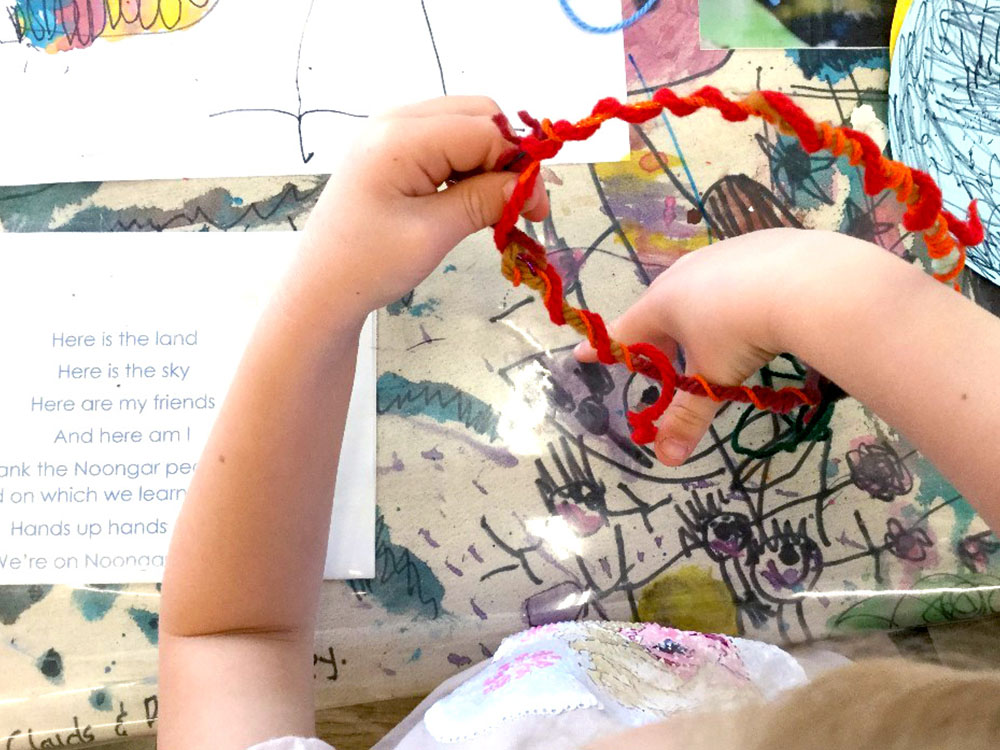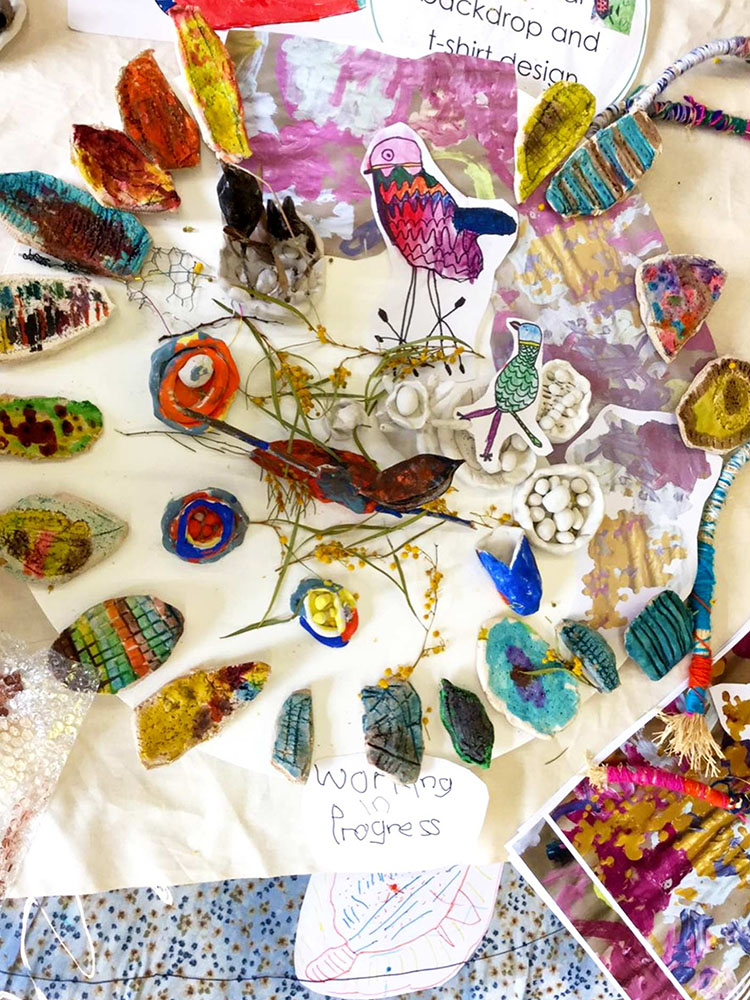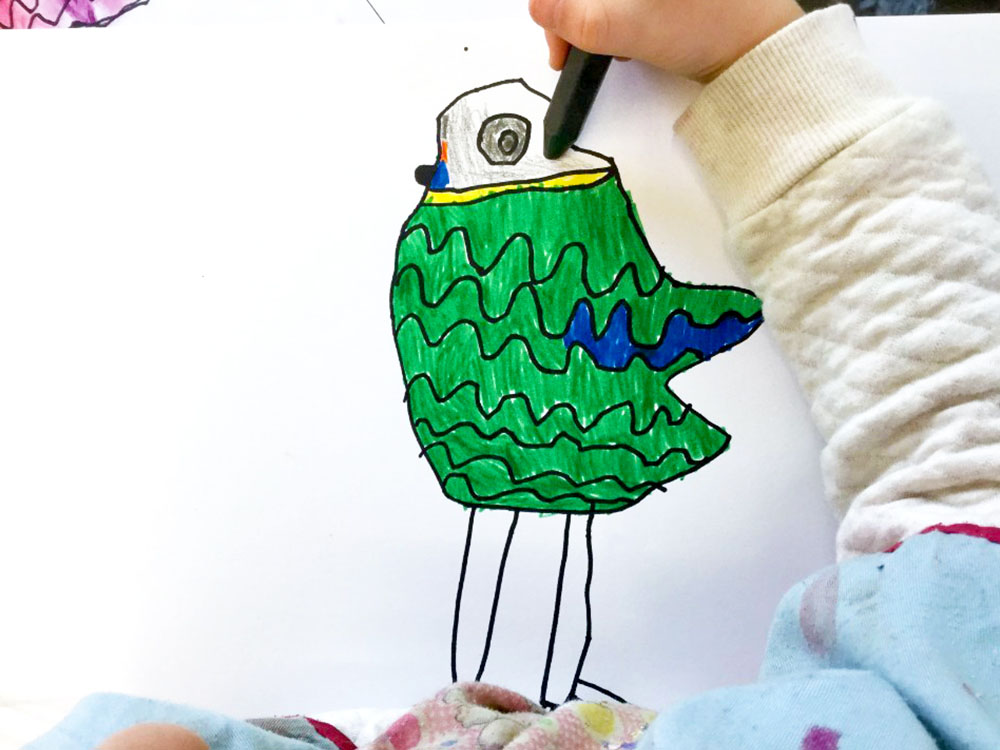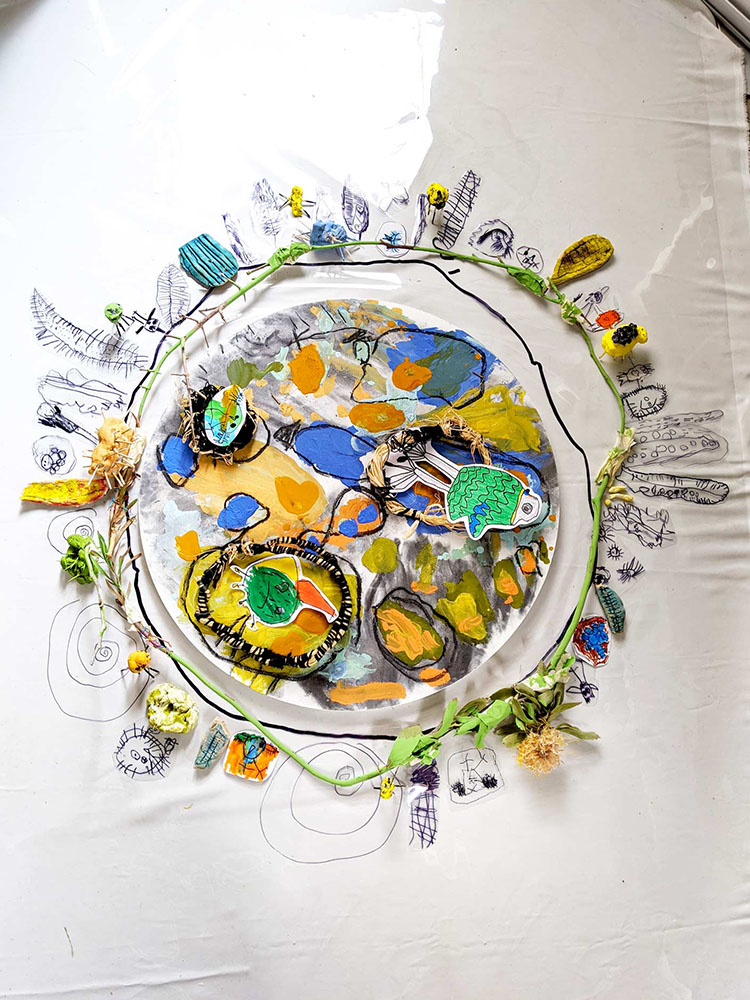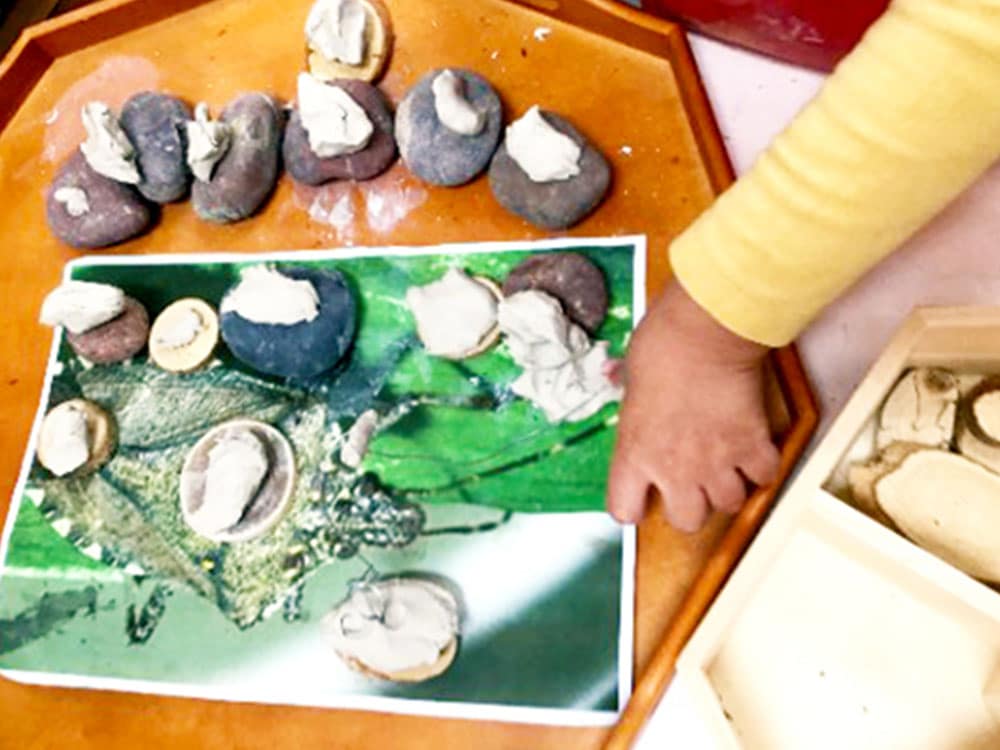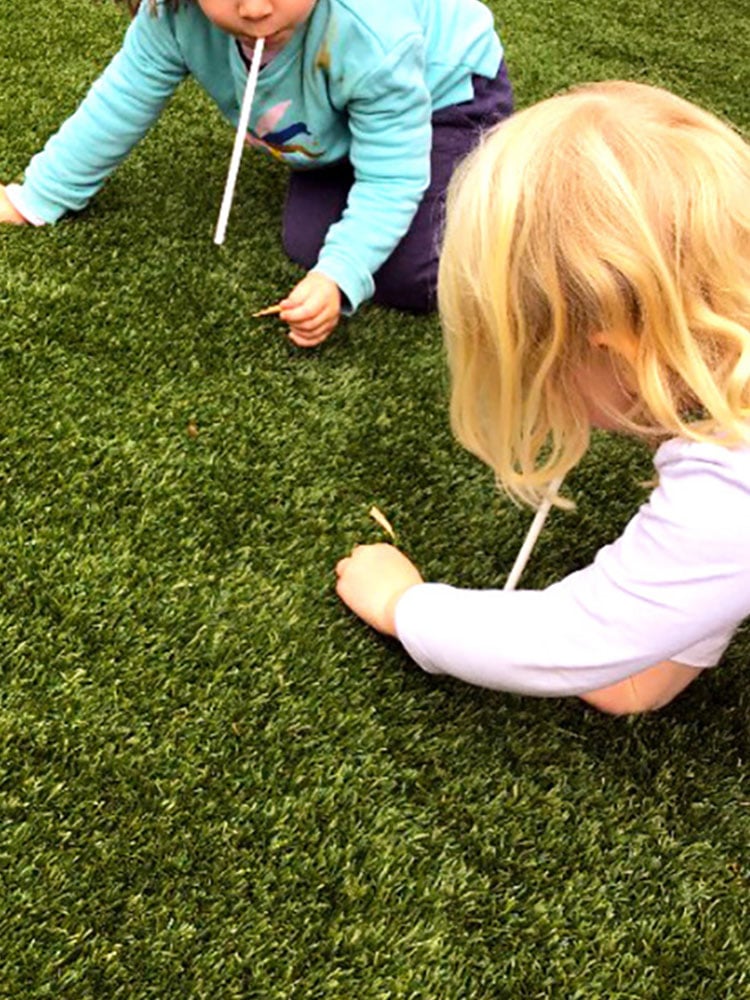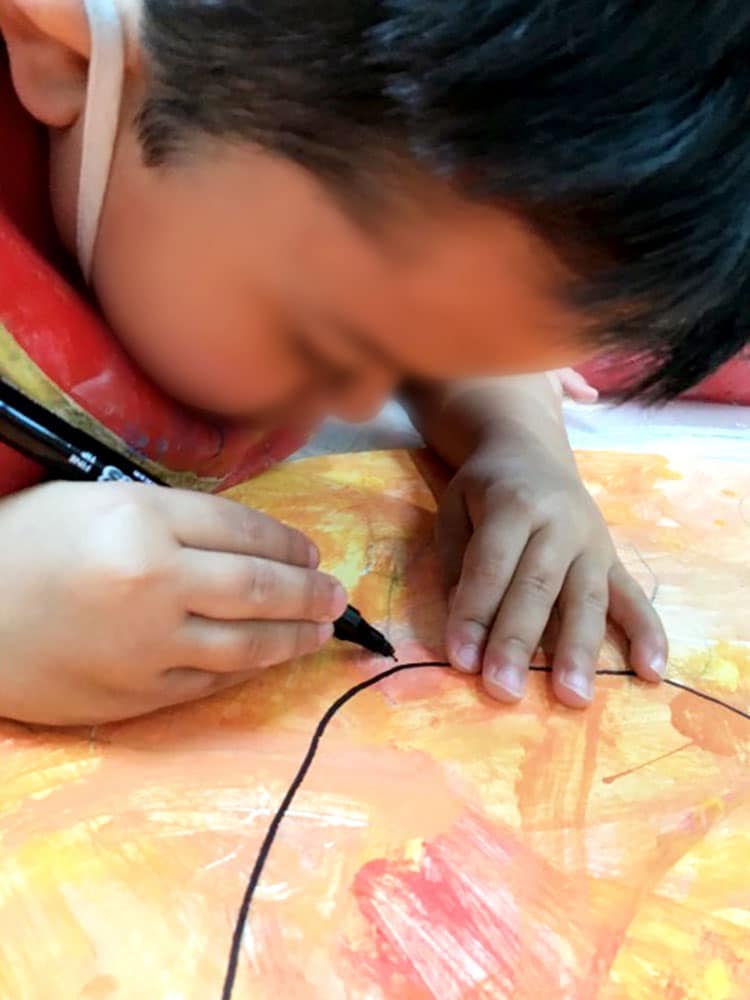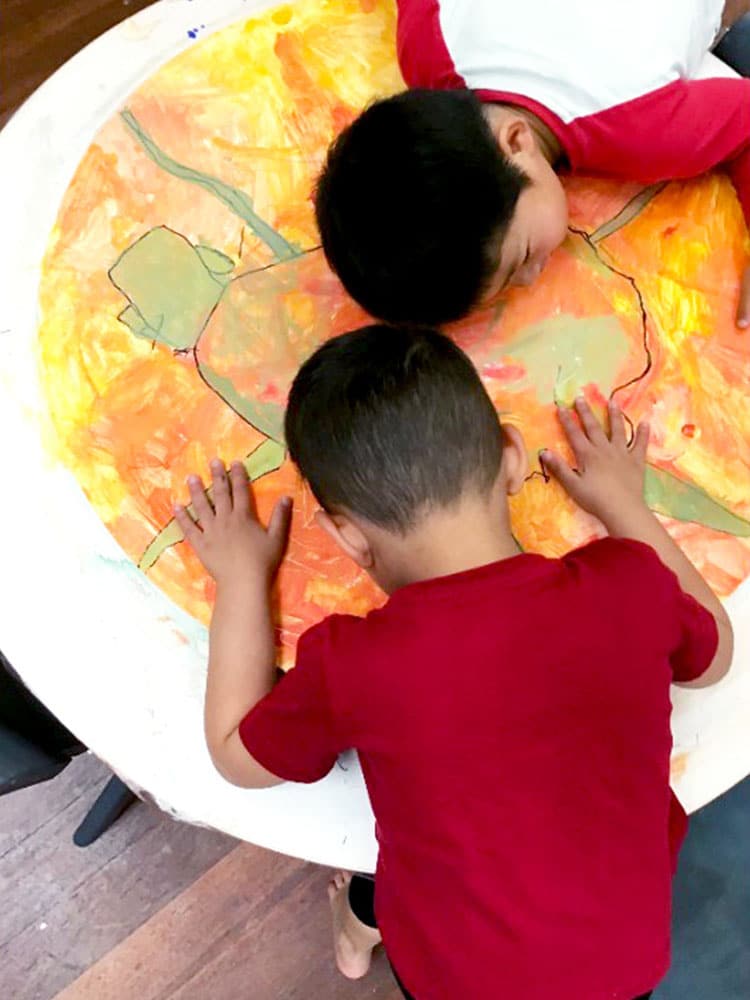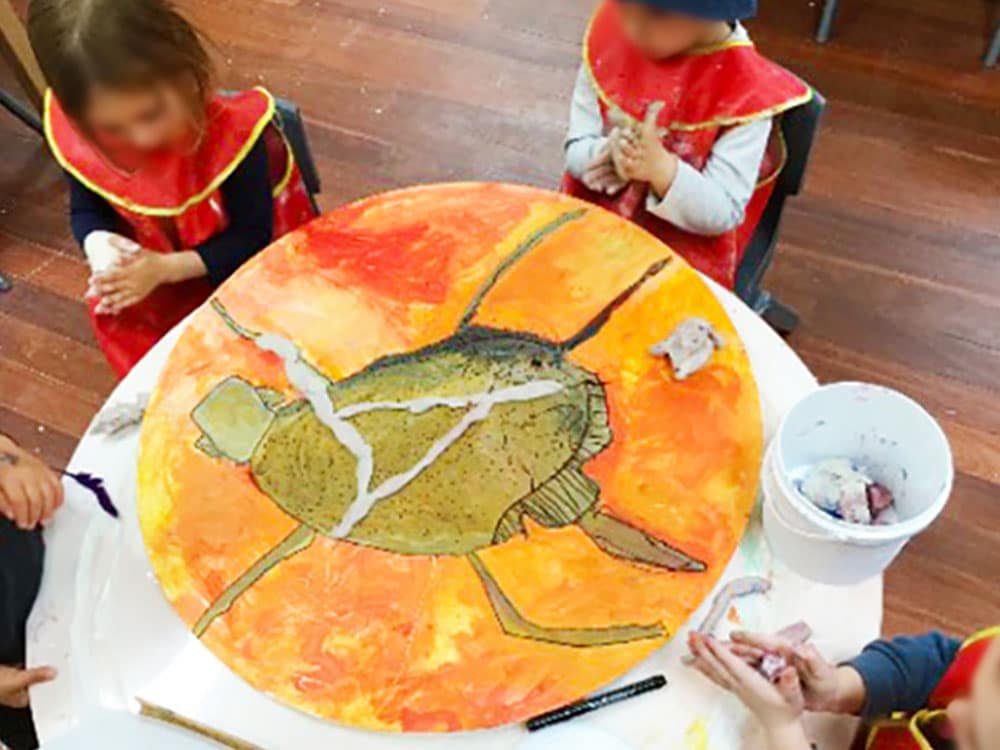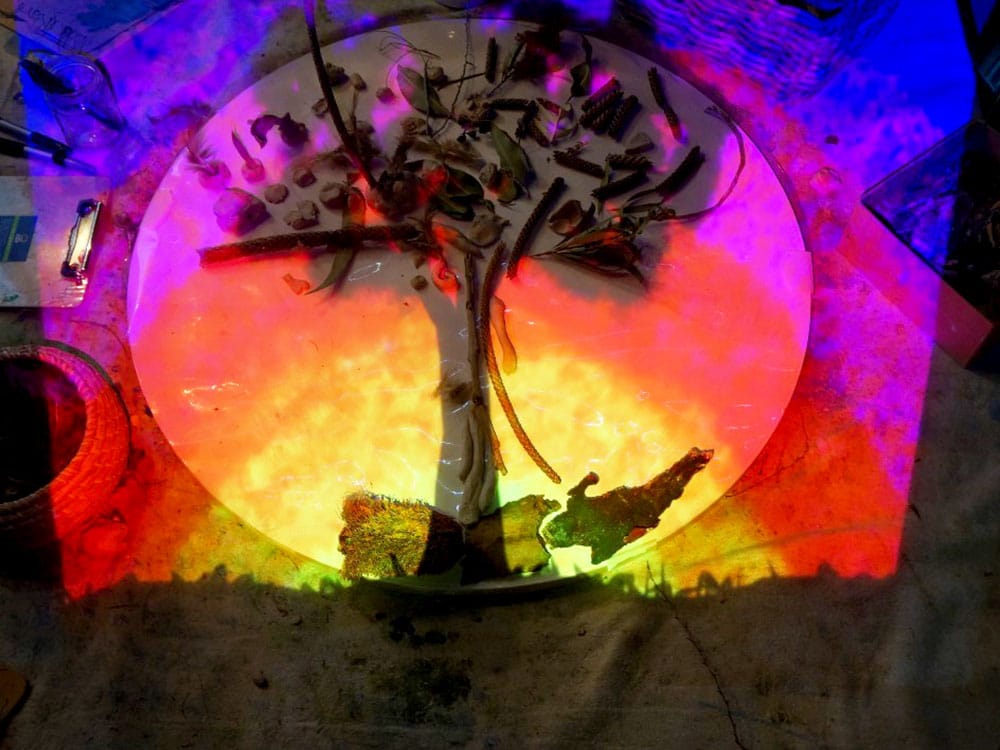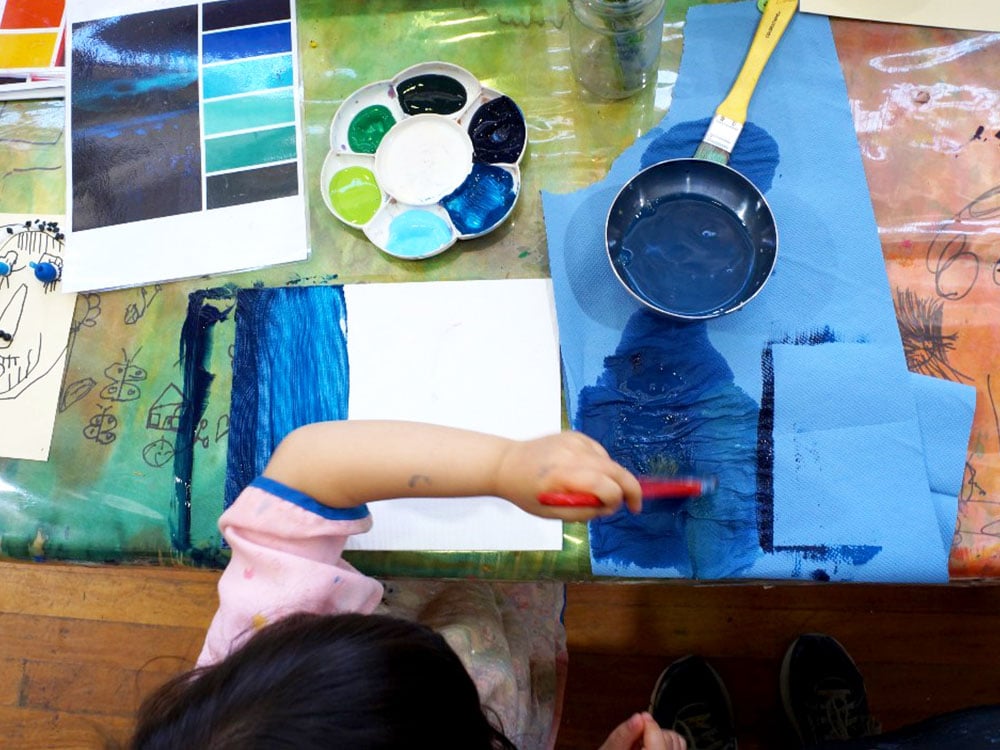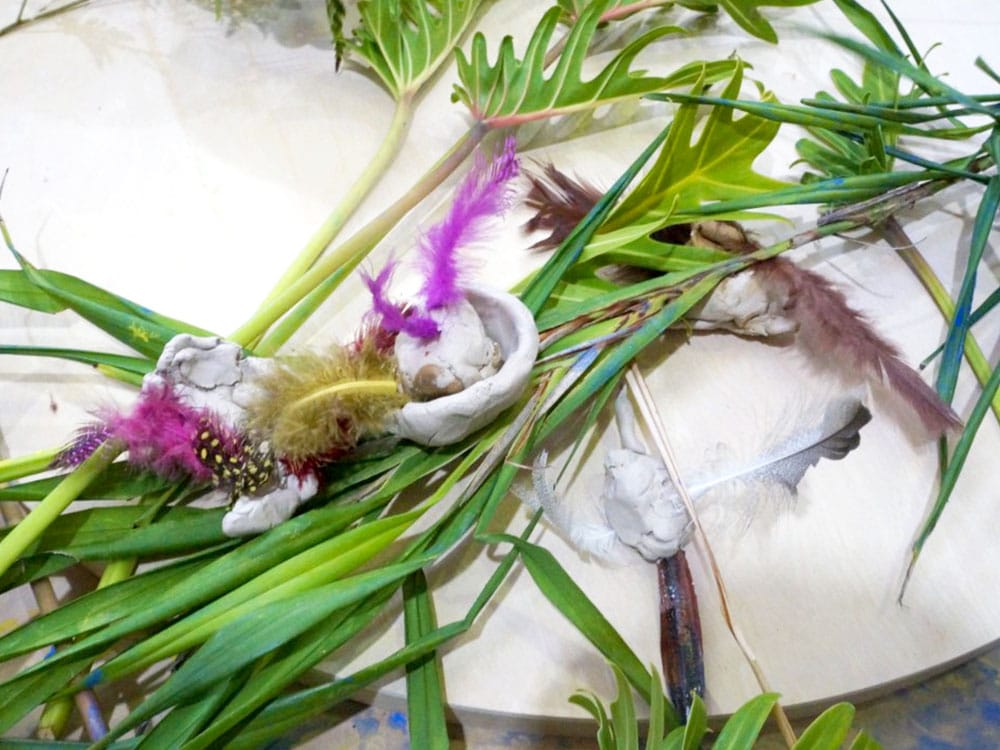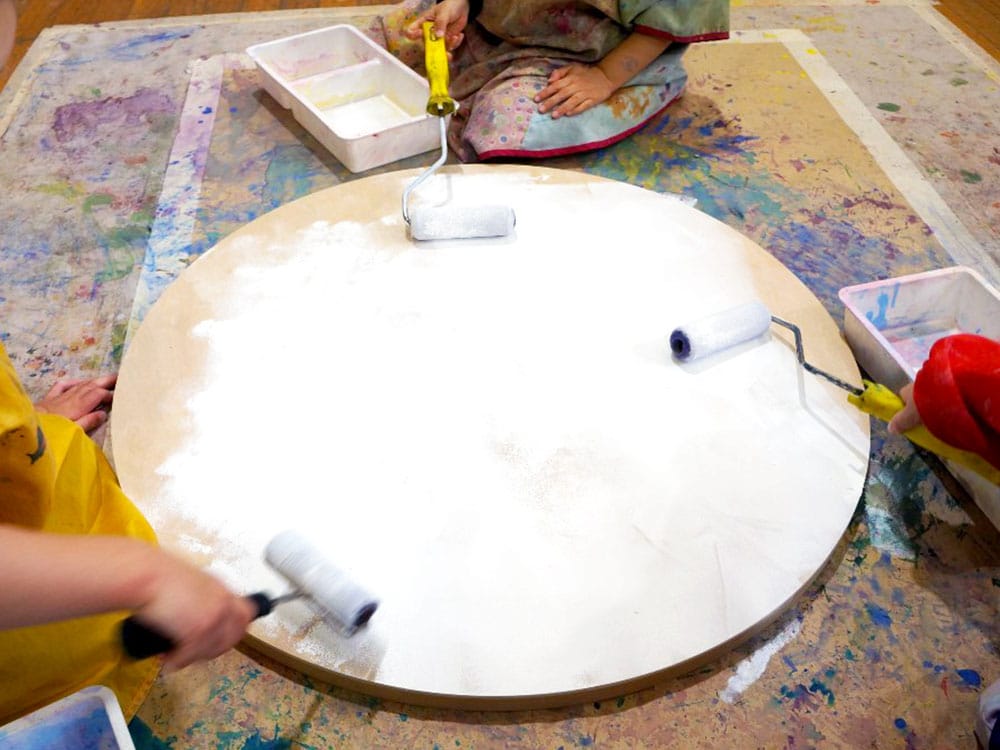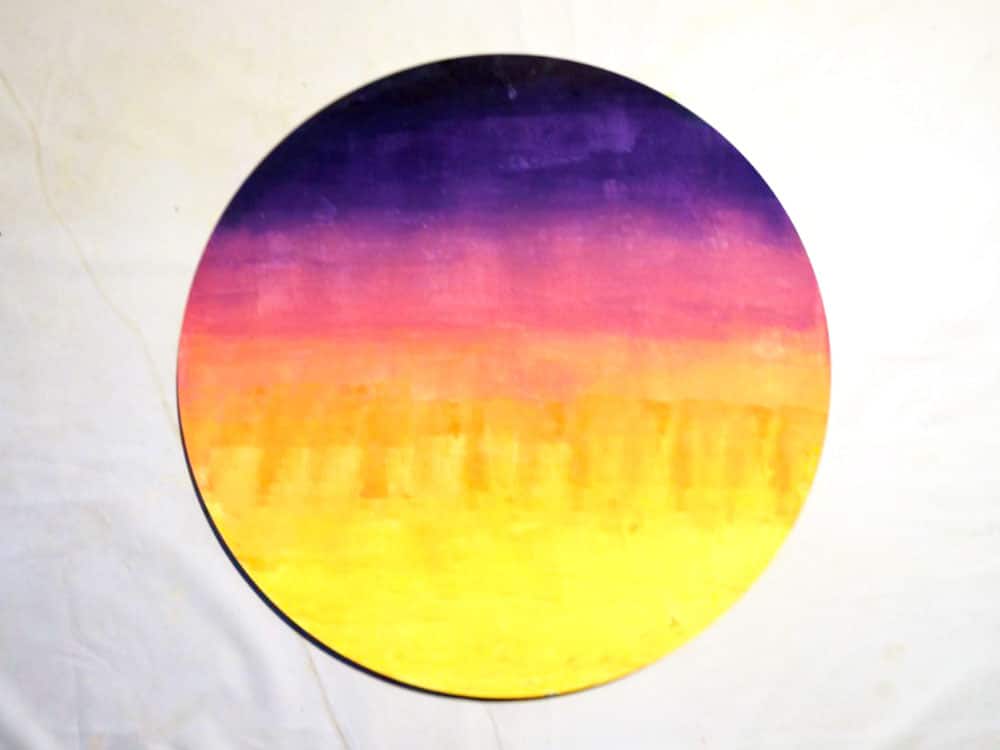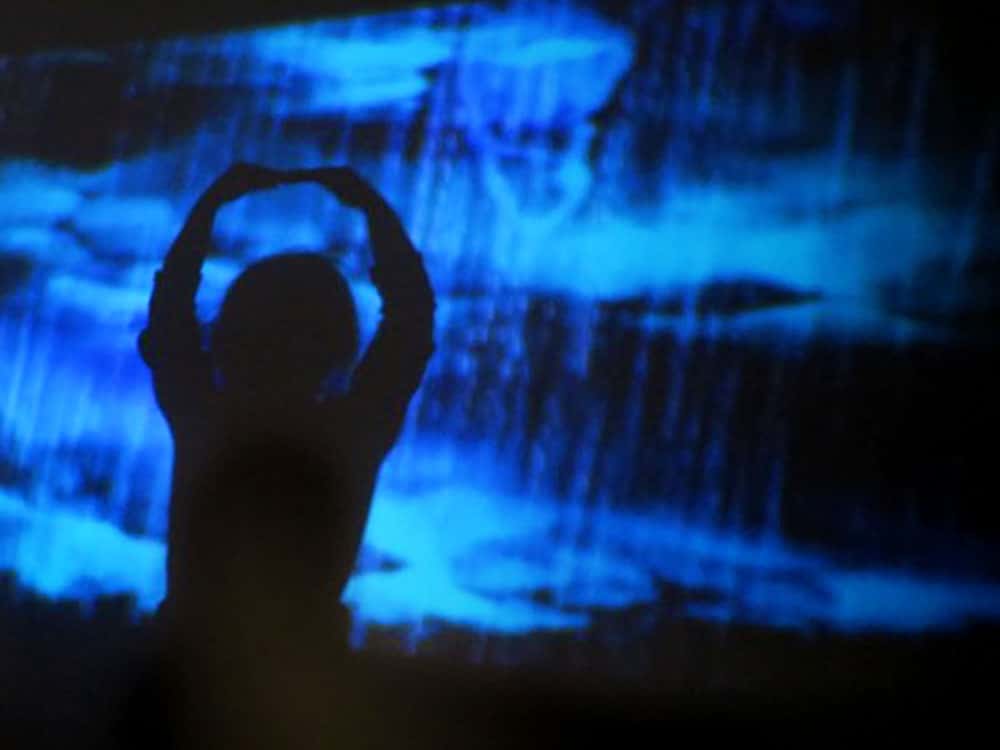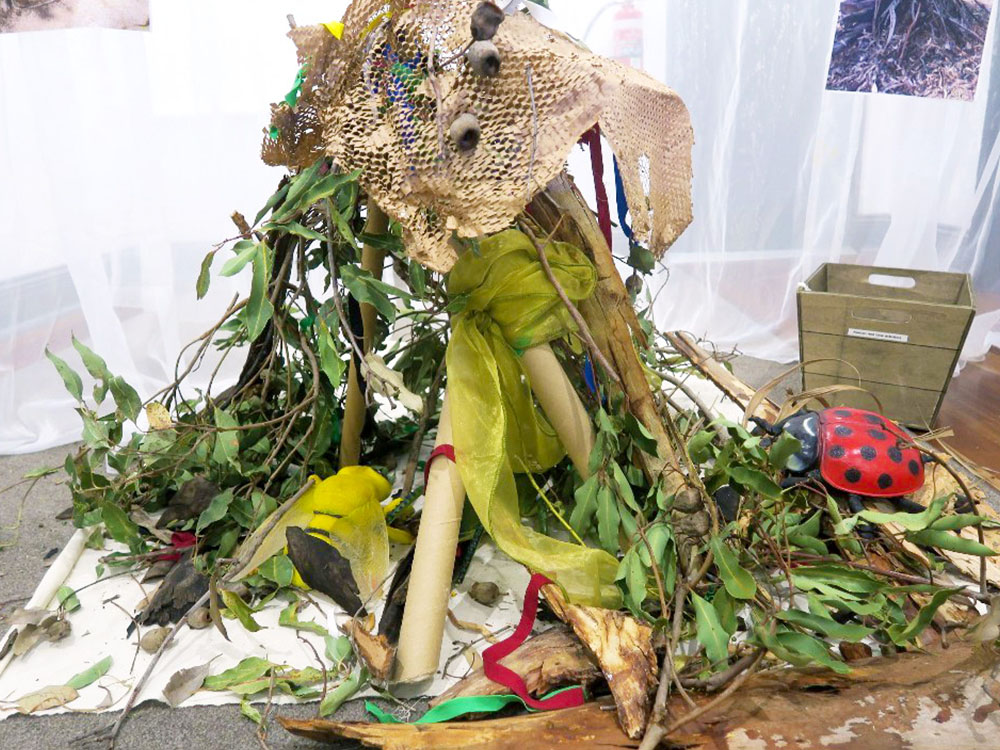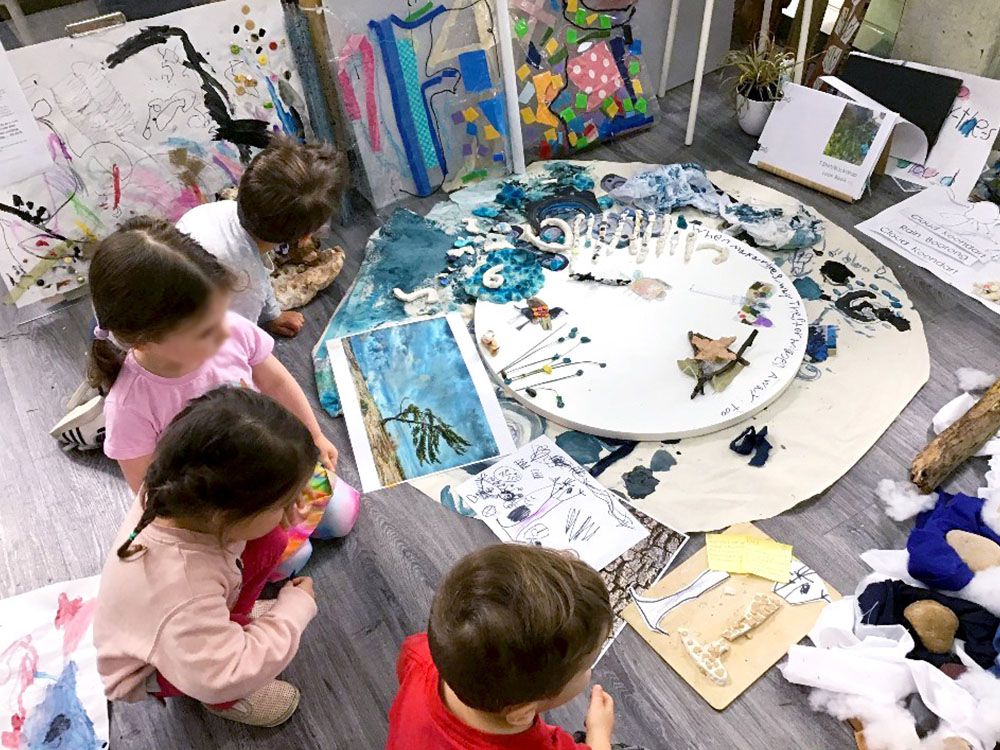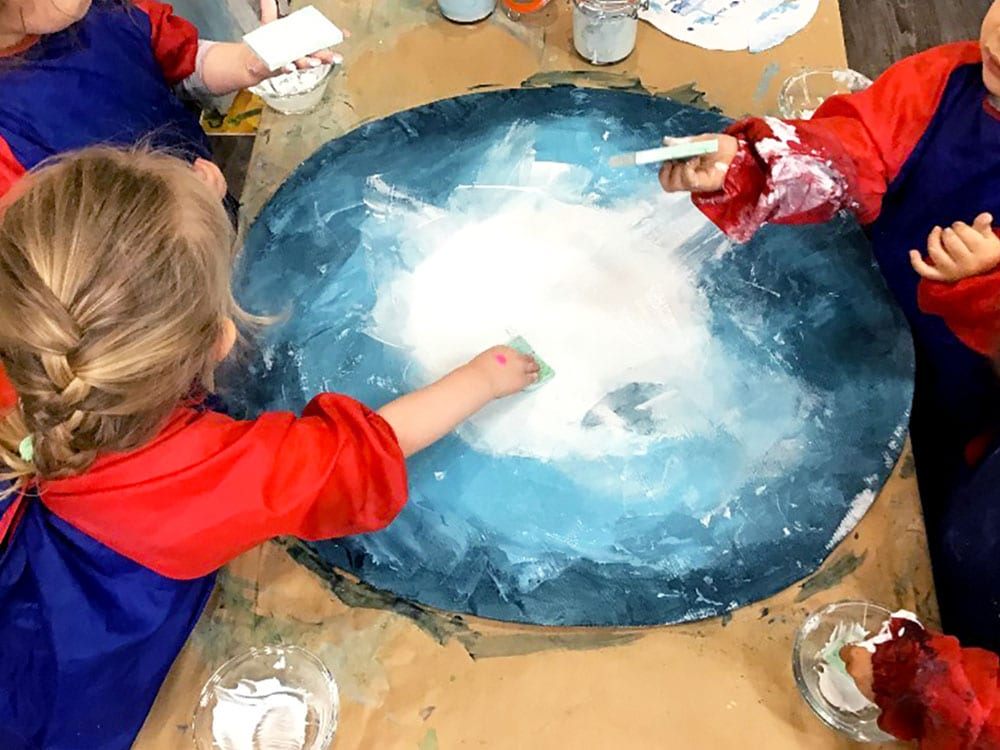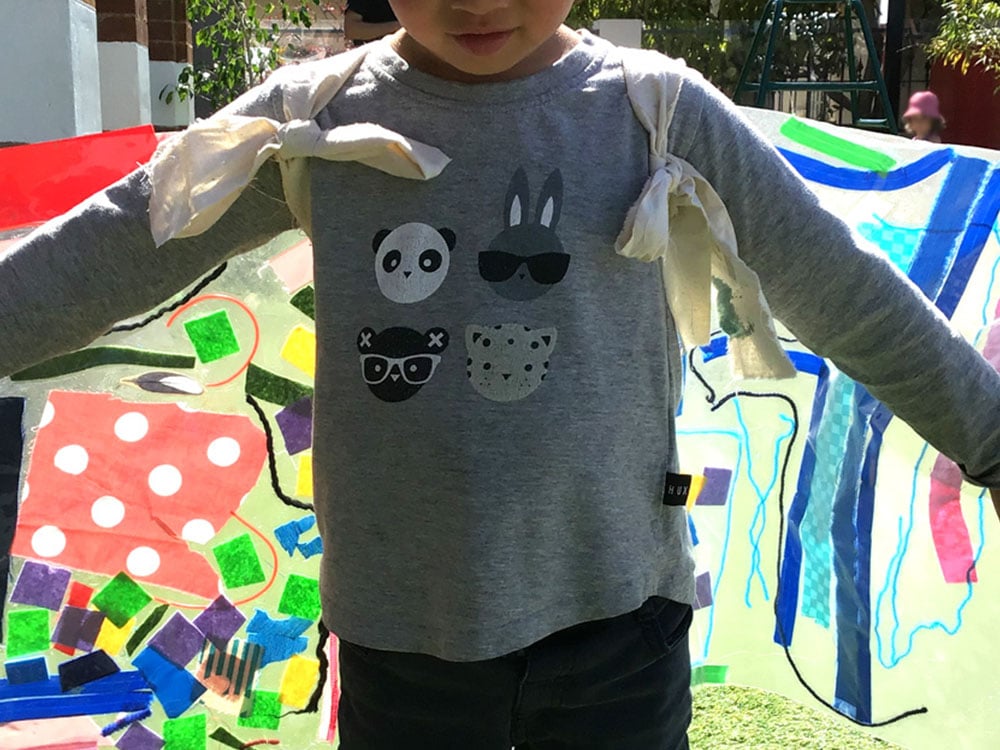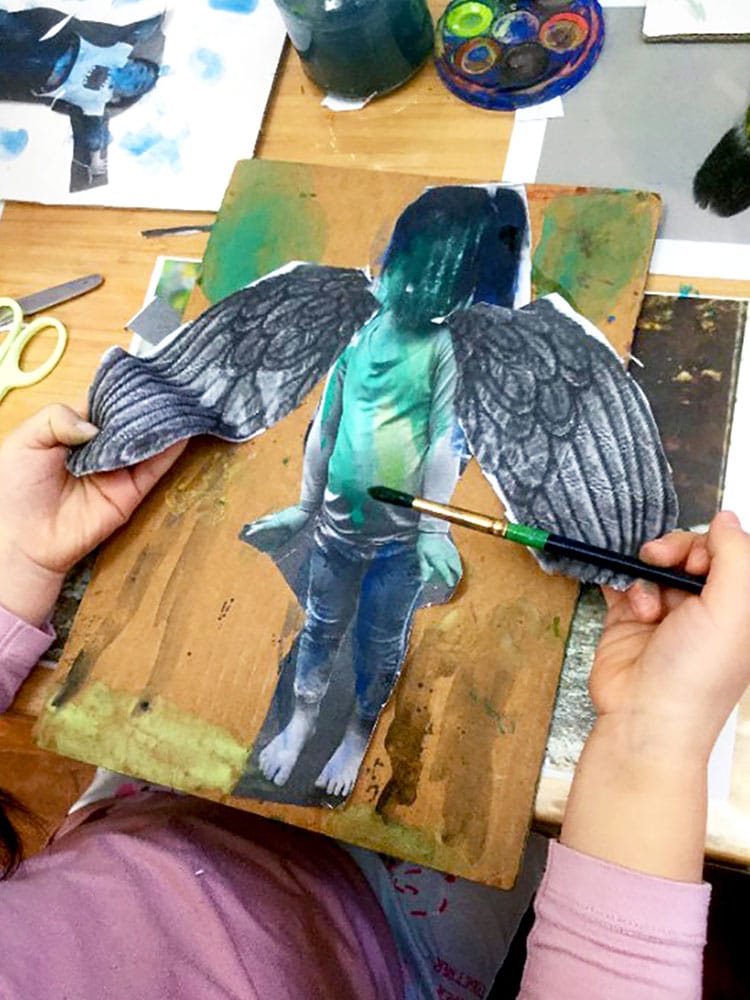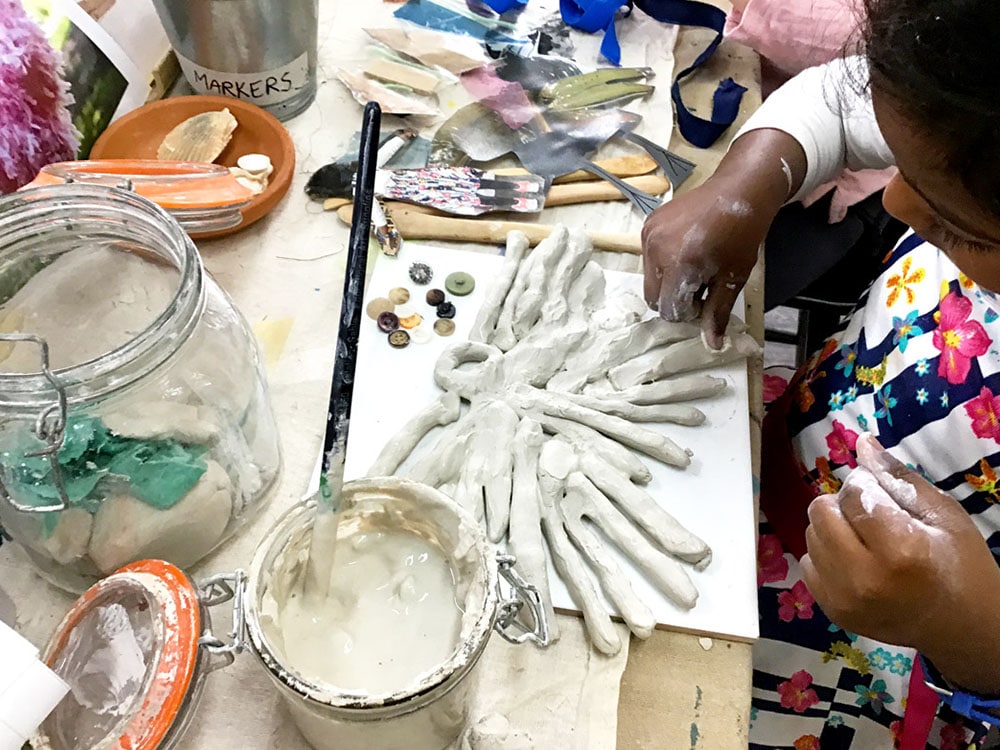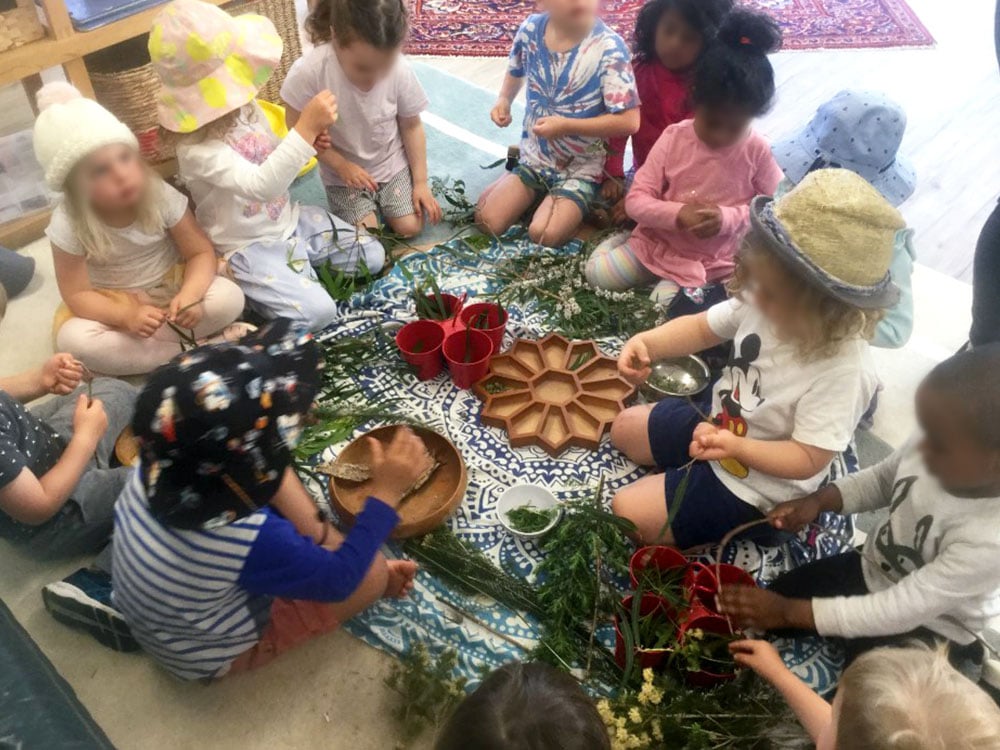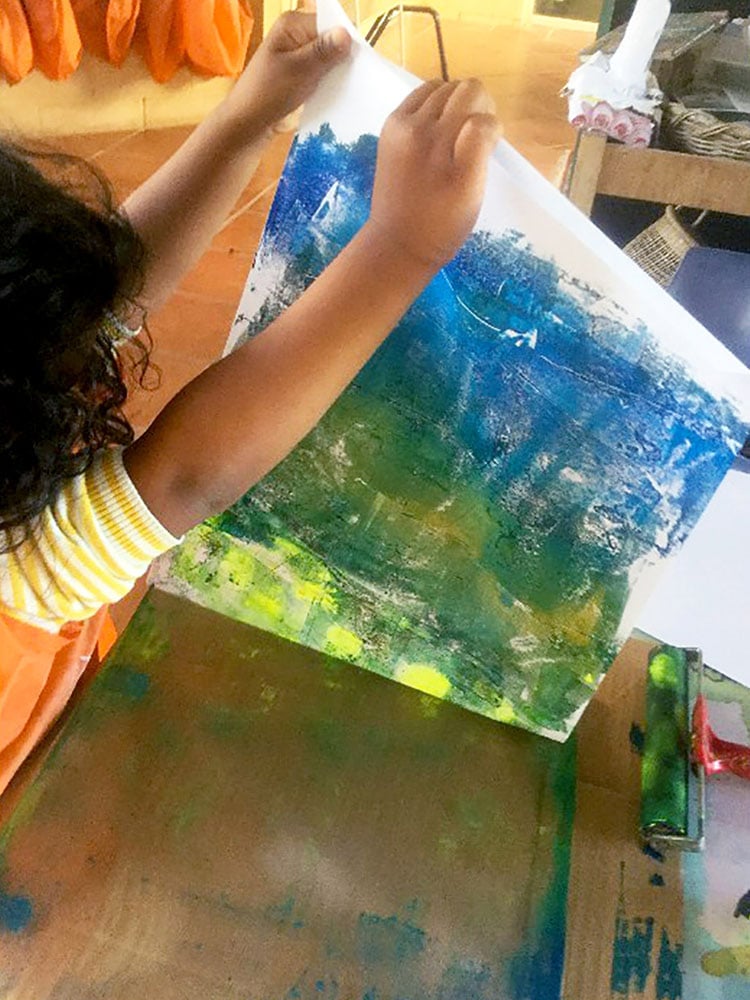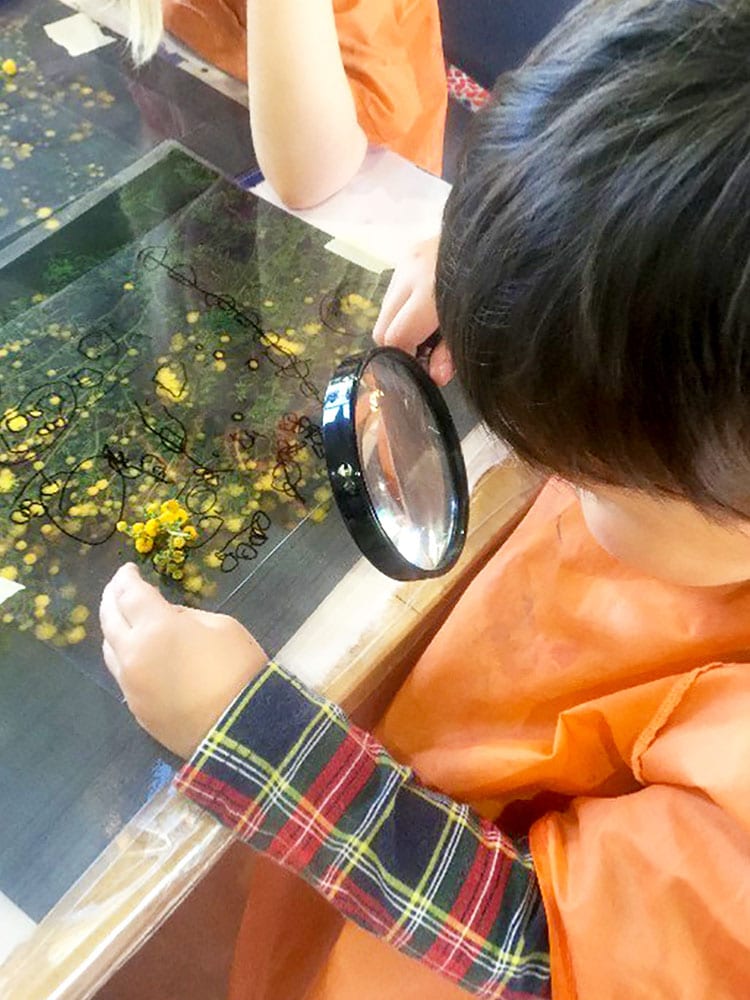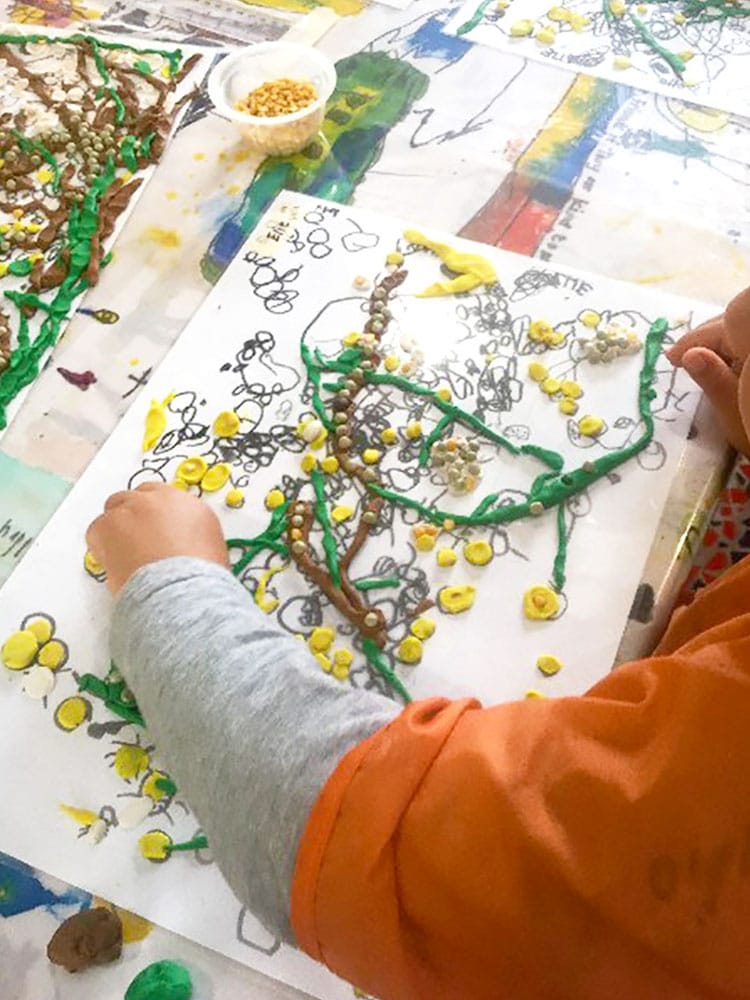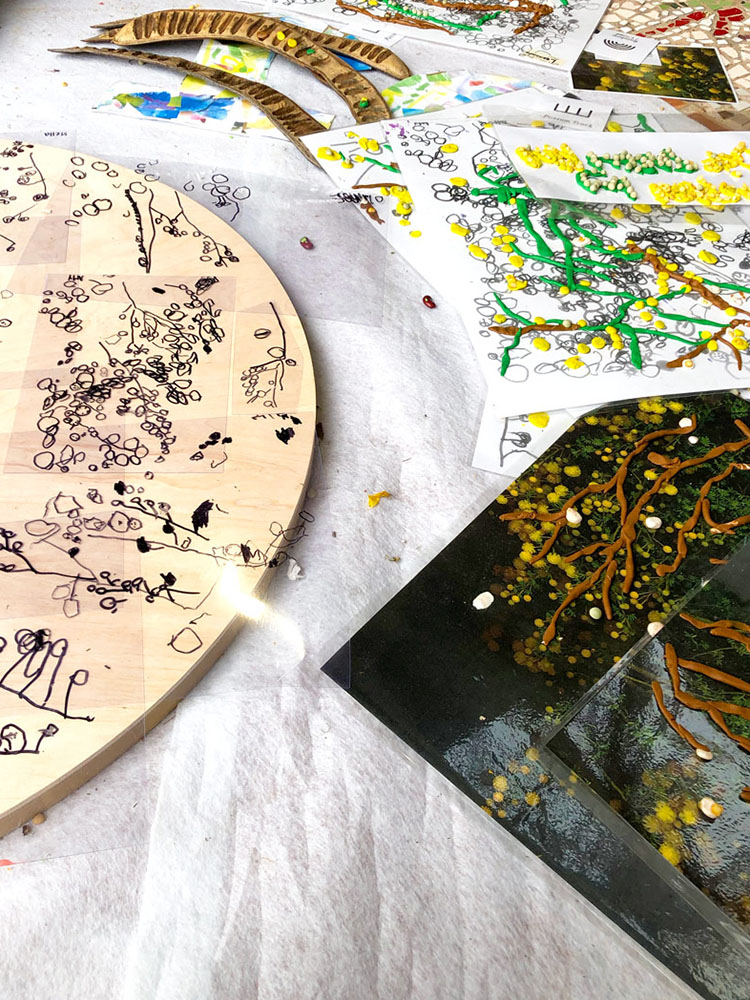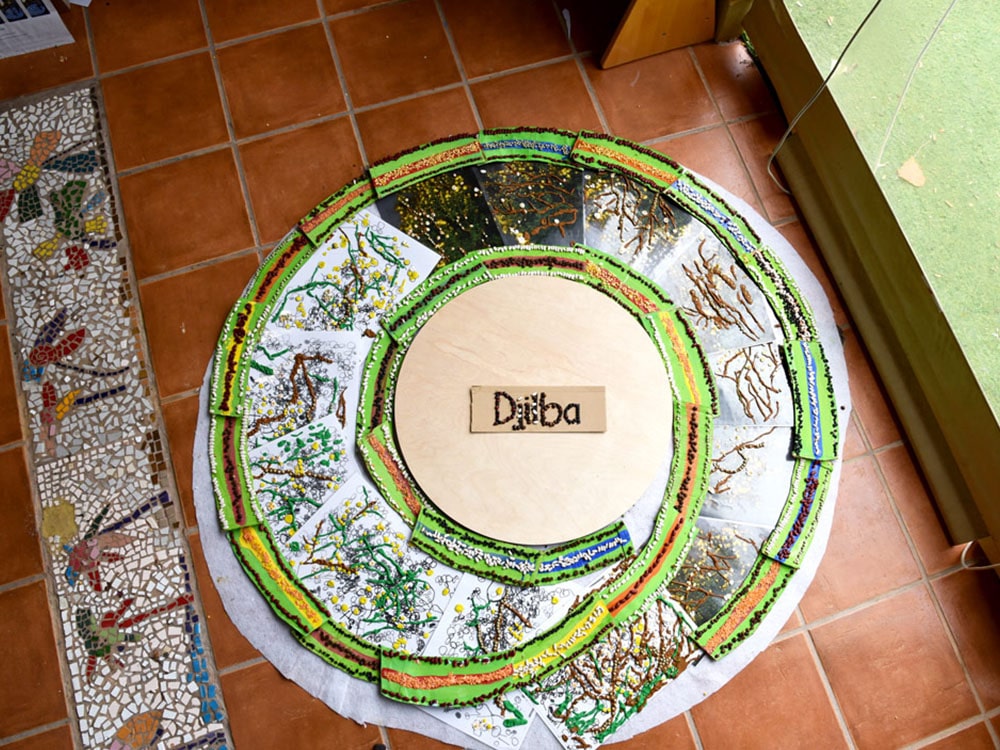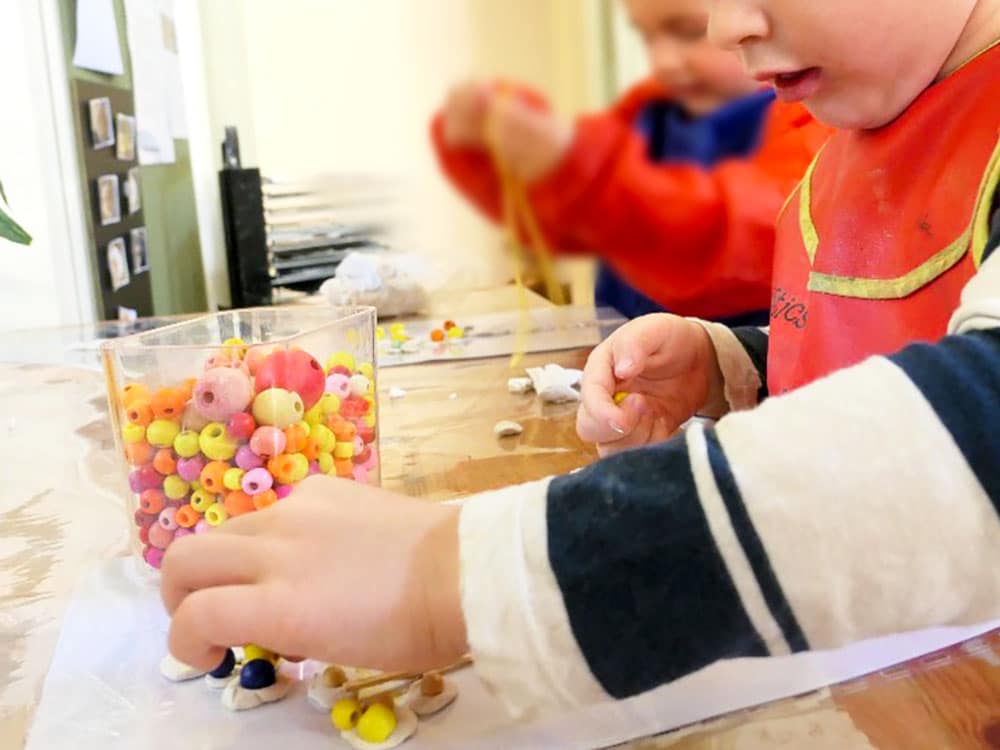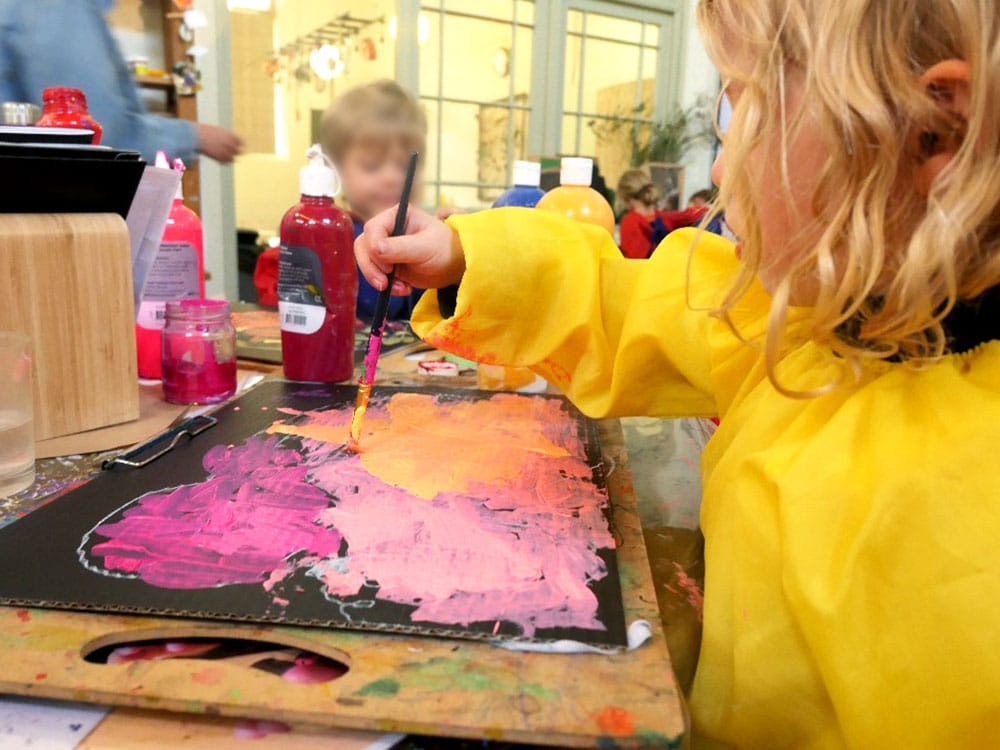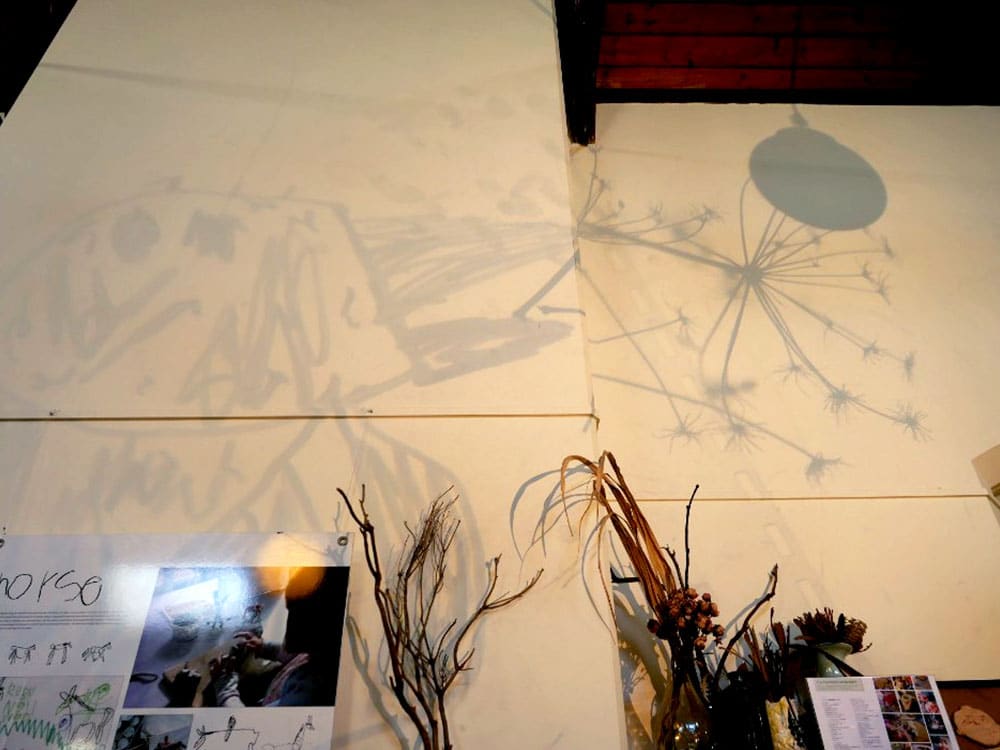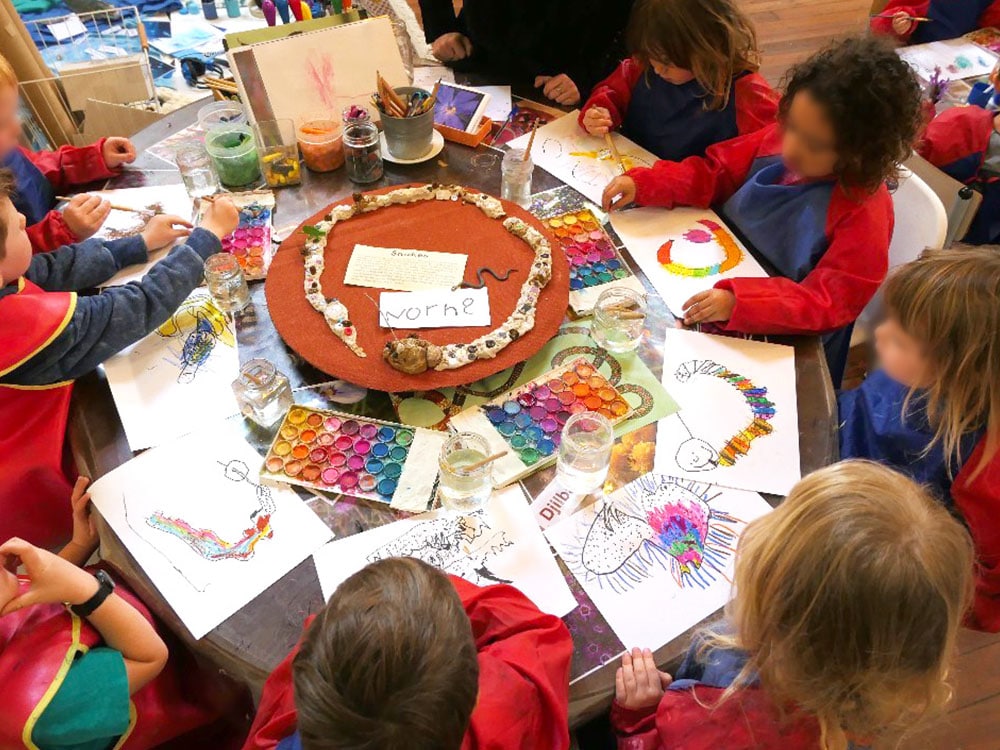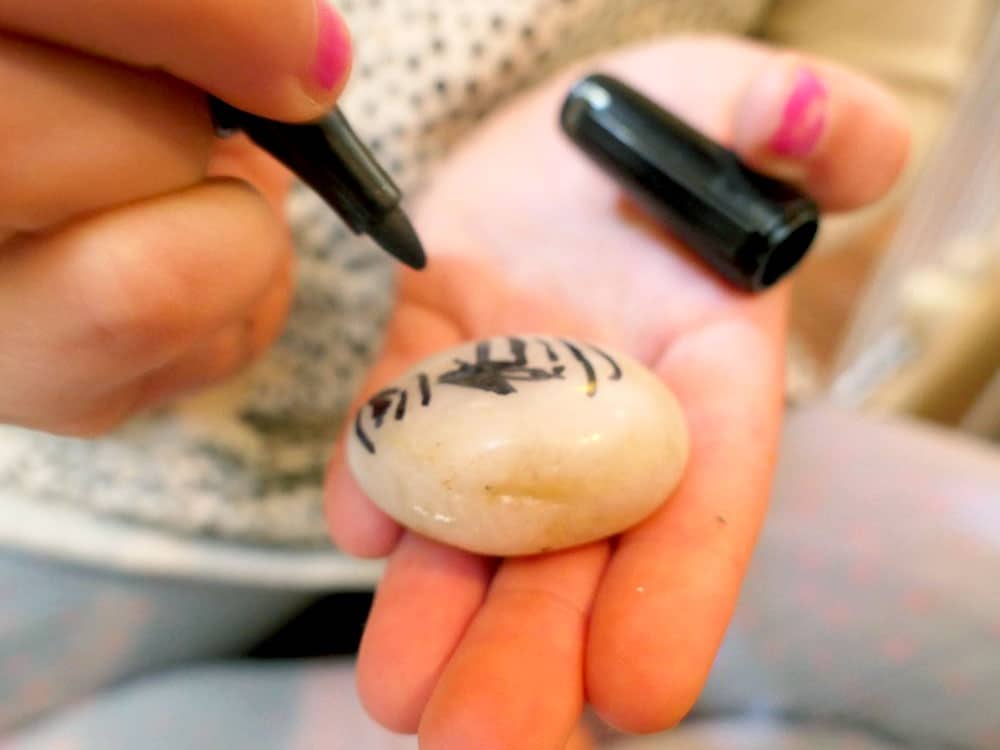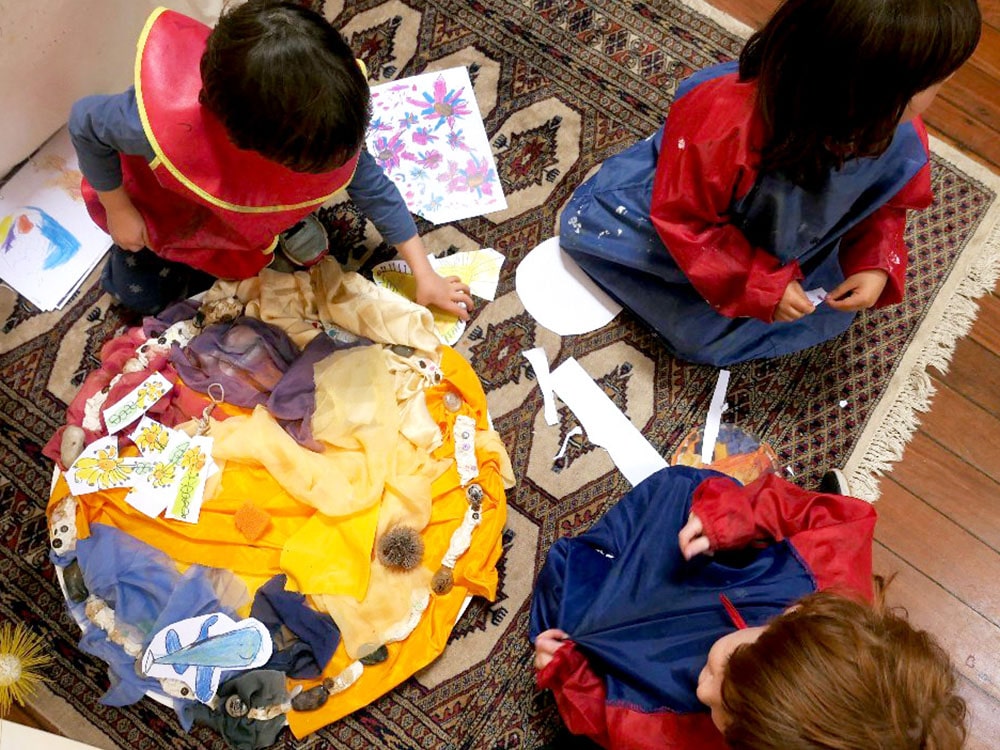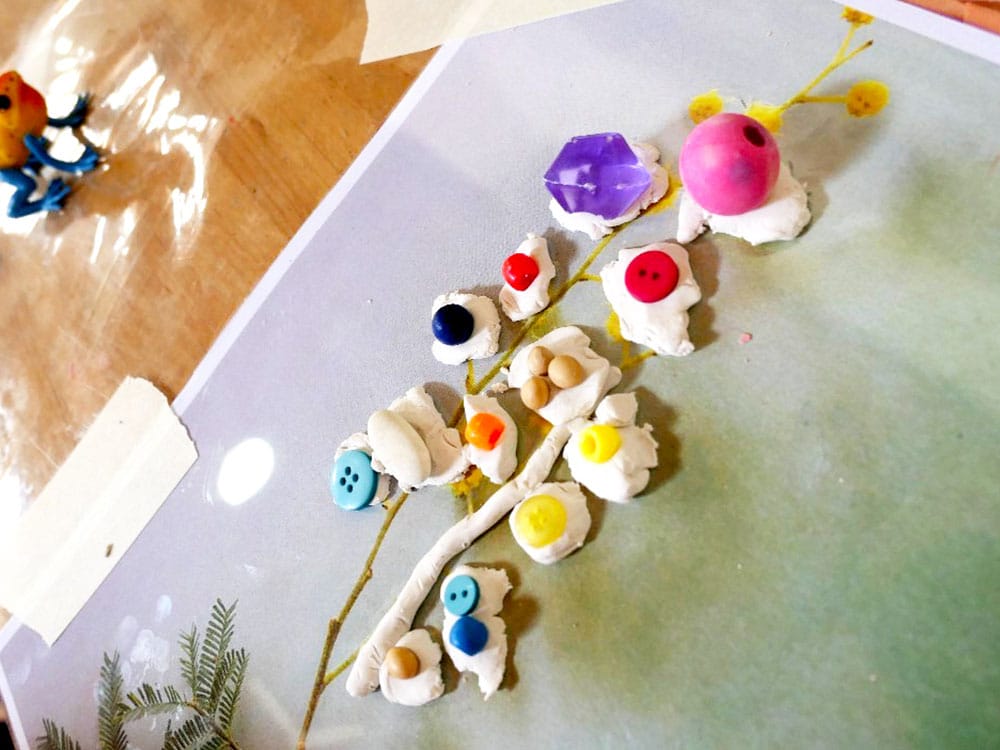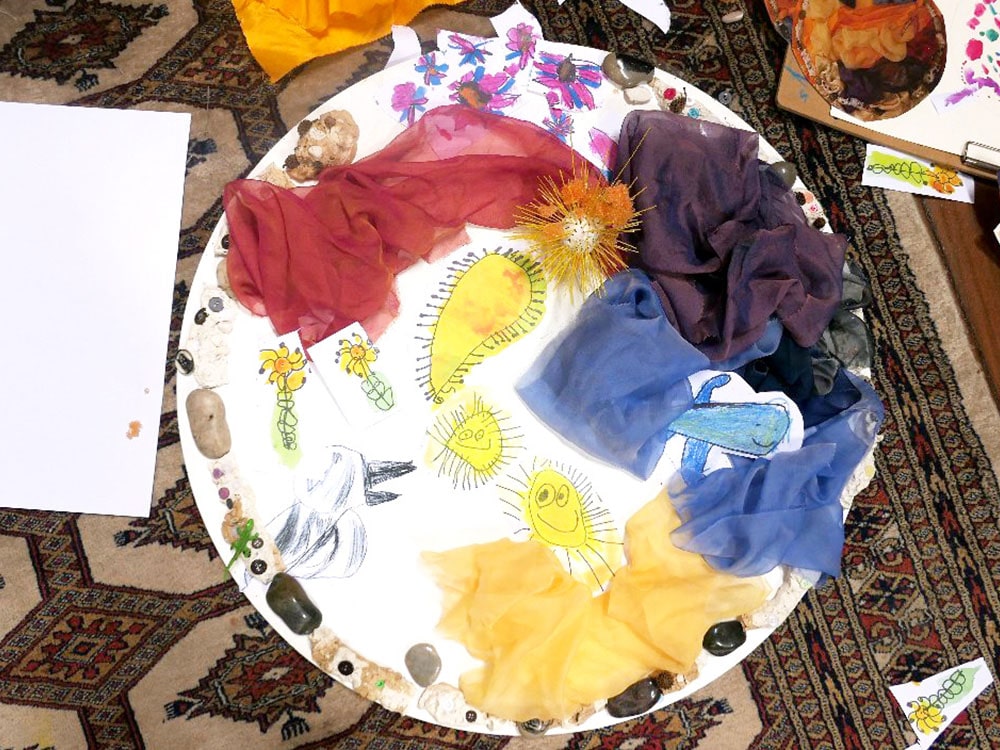Written by Liz Chavez
Each year, SOEL chooses a big idea to research with the 3- and 4-year-old kindy children.The Reggio approach sees teachers as not simply transmitters of knowledge. Teachers are learners, researchers and co-constructors of knowledge:
“We teachers must see ourselves as researchers, and to think, and to produce a true curriculum, a curriculum produced from all of the children”.
– (Malaguzzi, 1994; Moran, 2007).
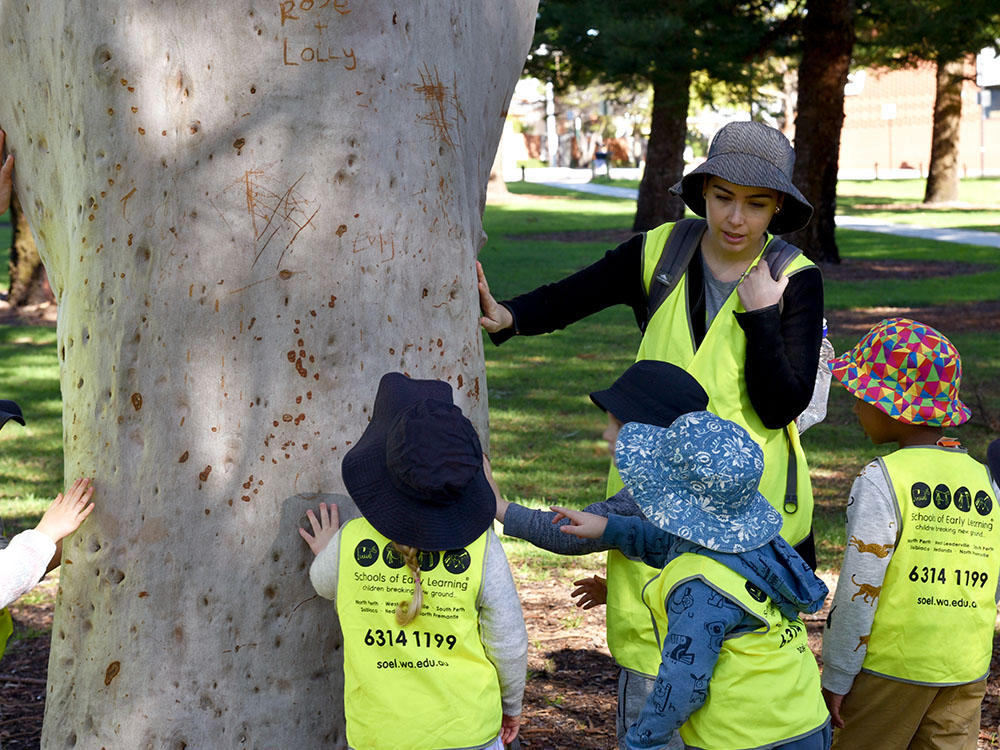
In SOEL’s 2018 and 2019 Research, we explored the idea of “Transforming together with our city”. During this investigation, educators and children had regular visits to Yagan Square and the Perth Cultural Centre; these places allowed us to see traces of Australia’s history and our First Nation’s people in the architecture, place names, sculptures, and exhibitions around. The often-untold stories of our City transformed our educators during this research.
These research findings informed the big idea explored in 2020 “Connection to Land and Country”.
Reconciliation through Research
As a school community, we wanted to move forward in our Reconciliation journey. The most effective way to do this, from our perspective, was to engage in research. We were researching with children in their learning programmes ideas around Connection to Land, nature and waterways. As a result, the concept of connecting to place and “Country” became the backbone of the research.
Previously, we felt paralysed by our desire not to be tokenistic or hurtful when engaging Aboriginal and Torres Strait Islander perspectives in our programme. Presently, some of us were unsure of how to start. These hard conversations about the truth of Australia’s history and our privilege are essential between us, our families, children and our community. These discussions take vulnerability, a sense of curiosity, openness and willingness to be brave.
For our first Nation’s people, Country (Boodjain Noongar language) does not mean the river and hills of Land. Boodja (Country) includes all living things; it incorporates people, plants, and animals. Additionally, it embraces the seasons, stories, and creative spirits. “Boodja” (Country) is both a place of belonging and a way of believing.
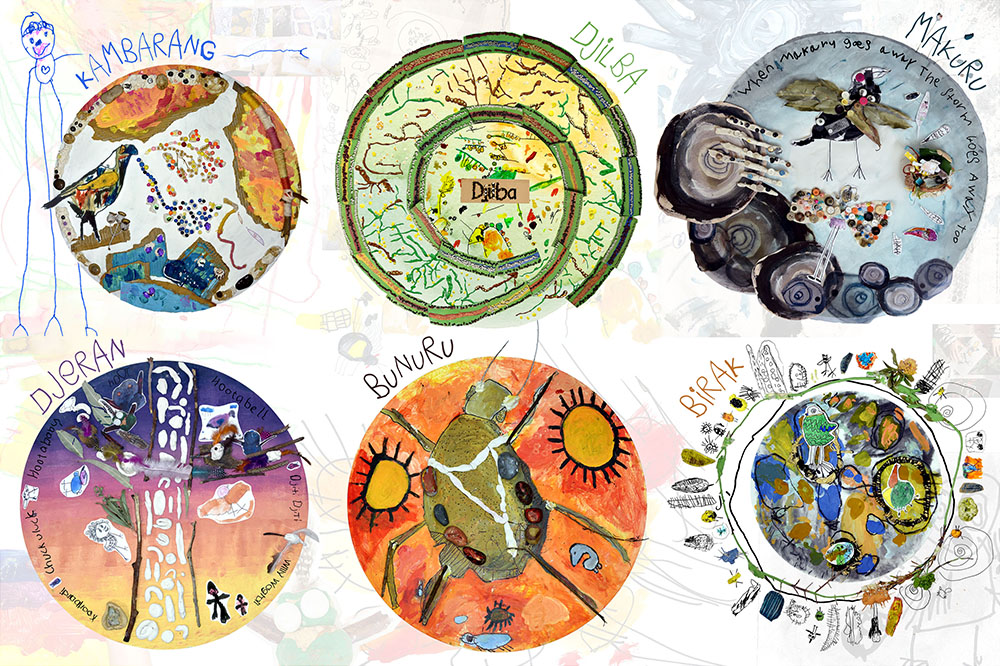

Six Noongar Seasons
Our connection to Country began in our gardens and backyards and then moved to places in our community. The Six Seasons of the Noongar calendar provided a backdrop for observing, wondering, learning names and stories of place.
Unlike the European calendar, there are six Noongar seasons in Western Australia’s South West region. Indicating the seasons are changes in local plants, animals, textures and colours of the sky. Each season’s nuances and specific characteristics provided an invitation to slow down, notice, and become attuned with nature.
Each of our six centres researched in depth one of the 6 Noongar seasons:
Birak (December to January)
Birak is the season of the young. The colour red represents it as it symbolises heat, sun and fire. The children at Subiaco researched this season.
Bunuru (February to March)
Bunuru is the season of adolescence. It is known as the second summer and the hottest time of the year. The children at Como researched Bunuru.
Djeran (April to May)
Djeran is the season of adulthood. It is known as a peaceful season with stunning sunsets of gold and pink. Also known as a time to repair shelter and housing, West Leederville children researched Djeran.
Makuru (June to July)
Makuru is the season of fertility and the coldest and wettest time of the year. The children’s fascination with rain, thunderstorms, and shelters spurred this seasons research. The North Perth children researched this season.
Djilba (August to September)
Djilba is the season of conception and a time to look for the yellow and cream flowers starting on mass. It is a transitional time of the year. Frigid and clear days combine with warmer, rainy and windy days, mixing with the occasional sunny day or two. The children in Nedlands researched this season.
Kambarang (October to November)
Kambarang is the season of birth. It’s a time where snakes and reptiles start to awaken from hibernation seeking out warmth for energy for food. It’s also a time that many young families of birds will be singing out for their parents to feed them. Koolbardies (Magpies) will be out protecting their nests and their babies. The whales begin their migration journey. The children in North Fremantle researched this season.
Koorlong at SOEL
To further our research, we invited Koorlong -Noongar Songs in Schools Project into our centres. Guided by Elders and other cultural leaders, they’ve been singing Aboriginal songs across the Metro area and regionally across WA.
Koorlong had just released a new song called: Bibbulmun Bonar- Six seasons. The kindy roomshad become familiar with it, adding it to their learning programmes. Educators and children were learning the lyrics and using the song to provide context for the children’s understandings. During their visits to our centres, Koorlong performed this song every time. We were the first school to hear it and felt so privileged to be part of this process.
Around this time, the Pedagogical team created a music video. The video illustrated the six seasons song with images and ideas from the research undertaken with the children. We gifted the video to Koorlong and the Madjitil Moorna Choir.
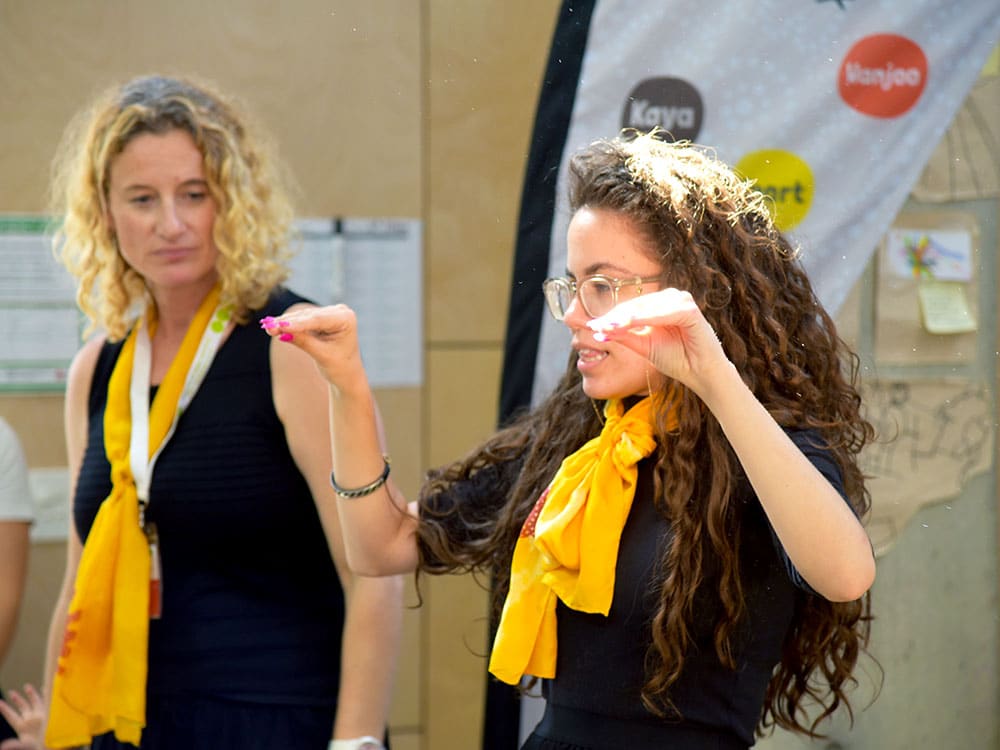

“The Choir absolutely loved your video, and we had a big discussion about how change would come from the youngest generation. The fact that this video will be shared in young children’s homes excites us, and we are keen to share it too”
– Kylie Bishop Coordinator Koorlong: Noongar Songs in Schools
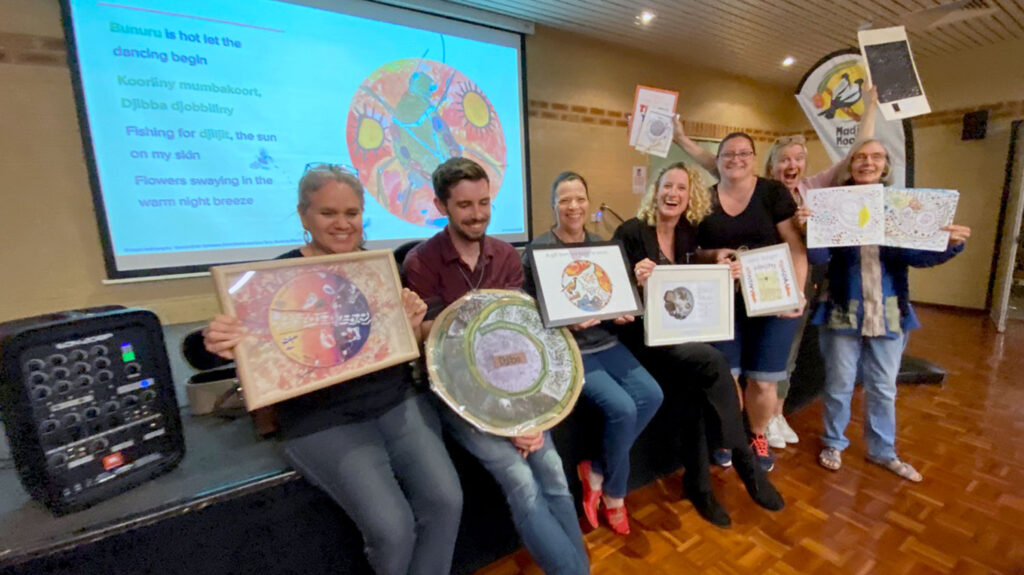

Yarning Circles with Educators
As part of this ongoing research, Della Rae Morrison visited our centres with her Mum. Della is a Bibbulmun woman from the South West of Western Australia and the Madjitil Moorna Choir musical director. Della and Patricia Morrison met on three occasions with our Studio, Teachers and Manager teams. We sat in a yarning circle (or dialogue circle) and listened to their story towards healing and reconciliation. The use of a yarning circle is an essential process within Aboriginal culture and Torres Strait Islander culture. Indigenous peoples have used it around the world for centuries.
“It is a harmonious, creative, and collaborative way of communicating”.
– Yarning.com.au


What is a Yarning Circles Purpose?
- Learn from a collective group
- Build respectful relationships
- Foster accountability
- Promote interactions and community connections
- Provide a safe place to be heard and to respond
Their visits had a profound impact on us. We felt humbled and grateful to hear and witnessed the resilience and strength of our First Nation’s people. As a result of these encounters and research, we will continue our reconciliation journey in 2021. We aim to do so with an open heart, a disposition to have courageous conversations, do better every time and a commitment to action.
Today and every day, we would like to acknowledge the Traditional custodians of the Land we stand on, the Noongar people of the Whadjuk Country.
We would like to acknowledge and respect their continuing culture and their contributions to the life of our City and our learning programmes. We pay our respects to their Elder’s past, present and emerging.

